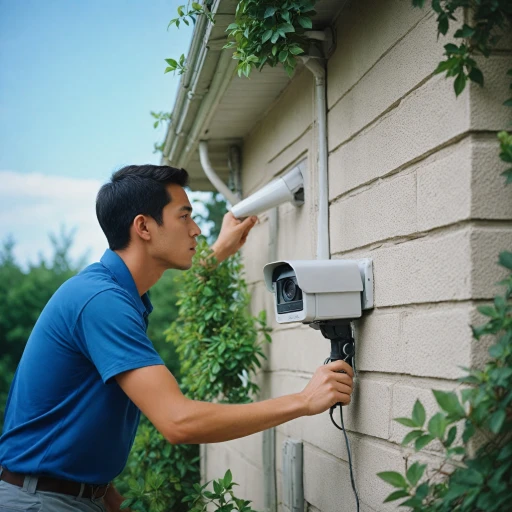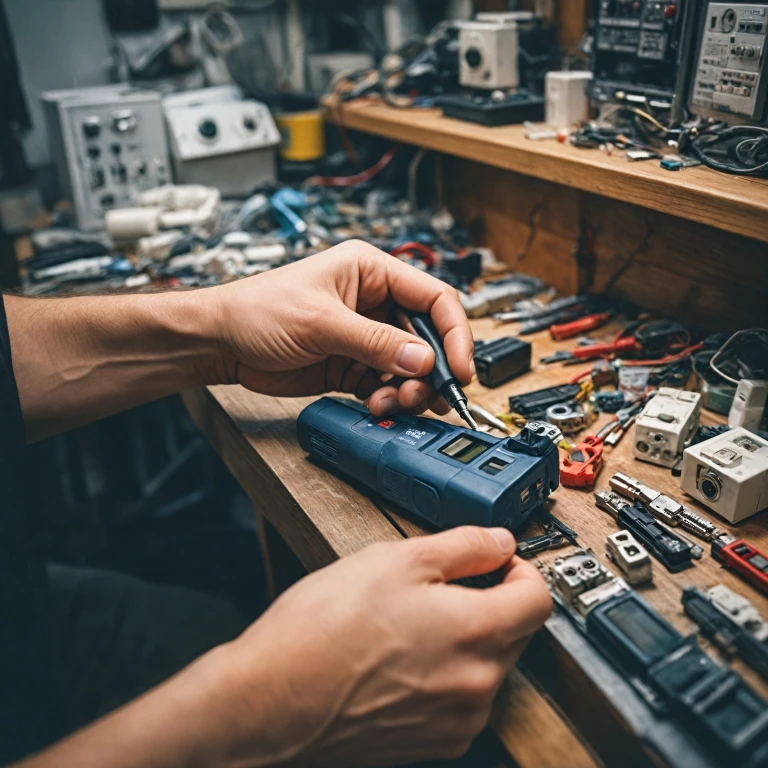
Understanding the Role of BNC Connectors in Security Cameras
The Importance of Quality BNC Connectors
Understanding the role of BNC connectors in your security camera system is essential for any homeowner seeking reliable video surveillance. BNC connectors, or Bayonet Neill-Concelman connectors, are critical in ensuring stable and high-quality video signals within CCTV systems. They serve as the bridge between the coaxial cables and the cameras, facilitating the transmission of TVI, AHD, and other video formats. One of the primary advantages of using BNC connectors lies in their ability to maintain excellent signal integrity without significant losses. This is crucial for achieving crystal clear video footage, which is important when identifying details in a security incident. Moreover, the presence of a BNC connector means you can handle both male crimp and compression connectors, depending on the specific installation needs. These connectors are designed to be used with coaxial cables and are available in various types, ranging from the traditional BNC crimp to the more versatile BNC compression connectors. Whether you’re planning a DIY installation or hiring a professional, choosing the right connector will save you time and potential headaches down the line. Speaking of making informed decisions, it's also important to consider other factors. The price and quality of the various BNC crimping and compression tools can vary significantly. Investing in a comprehensive tool kit can streamline your installation process and ensure all your components work seamlessly together. For those looking to elevate their home surveillance, a detailed understanding of BNC connectors is fundamental to optimizing your security camera setup. Check out this comprehensive guide on enhancing your home security with a PoE switch for IP cameras to understand how different aspects of your system can work in tandem for optimal security.Choosing the Right BNC Crimping Tool for Your Needs
Factors to Consider When Selecting a Crimping Tool
Choosing the right crimping tool is crucial for anyone looking to install or maintain home security cameras effectively. The right tool ensures that BNC connectors are attached securely to coaxial cables, providing stable video and audio signals. Here's what to consider:- Compatibility with Cable Types: Make sure the tool is suitable for your specific cable types, whether it's for RG6, RG59, or other variations of coaxial cables commonly used in CCTV installations.
- Type of Connectors: Decide between a tool for BNC crimp connectors and one designed for BNC compression connectors. Each type requires specific handling, and selecting the correct tool can save you from costly mistakes.
- Quality and Durability: A durable tool made of high-quality materials will provide consistent performance, reducing the likelihood of connection issues over time.
- Price and Budget: Cost is always a consideration, but investing in a reliable product can prevent future issues and save money in the long run.
Tool Types: Crimping vs. Compression
Both crimping and compression tools have their advantages and are selected based on specific needs and applications:- Crimping Tools: These are typically less expensive and require less force to use. Ideal for beginners who are working with BNC crimp connectors, they offer simplicity and quick installation.
- Compression Tools: Often preferred for their superior connection integrity, these tools require a bit more skill and practice. They excel with BNC compression connectors, ensuring a tighter and more weatherproof seal.
Step-by-Step Guide to Using a BNC Crimping Tool
Master the Technique of Crimping BNC Connectors Accurately
Crimping BNC connectors correctly is paramount to ensuring a seamless connection between your security camera and the video monitoring system. Here's a comprehensive guide tailored to assist you in carrying out this process with precision.- Prepare Your Tools and Materials
- Crimp Tool: Choose a reliable crimping tool designed specifically for BNC connectors; ensure it is suitable for the coaxial cable you're using.
- Cable Stripper: This is vital for stripping the outer jacket of the coaxial cable (also known as coax).
- Compression Tool and Connector: Depending on the BNC connector type (compression vs. crimp), have the compatible tools at hand.
- BNC Connectors: Have quality BNC male crimp connectors from a trusted product line to guarantee durability.
- Coaxial Cable: Ensure you are using good quality RG59 or other compatible cables for your specific requirements like TVI or AHD CCTV systems.
- Preparing the Coaxial Cable
- Utilize the cable stripper to delicately remove the coaxial cable's outer jacket, exposing the braid.
- Trim the braid away from the inner conductor to reveal about 1 to 2 millimeters of cable core. This step is crucial to prevent short circuits.
- Attaching the BNC Connector
- Slide the crimp sleeve over the cable.
- Fit the prepared BNC male connector onto the exposed end by inserting the inner conductor into the pinhole of the connector.
- Ensure the cable folds tightly within the connector but do not force it beyond design specifications.
- Crimping the Connector
- Position the connector within the crimp tool's designated opening.
- Squeeze the crimping tool handles firmly until it securely fixes the crimp sleeve onto the coaxial cable. Repeat this step with even pressure to avoid damaging the connector or the cable.
- Final Checks
- Inspect the final crimp for stability. The connector should be snug, devoid of any wobbling or looseness.
- Conduct a continuity test, if necessary, to verify the integrity of your connection.
Common Mistakes and How to Avoid Them
Avoiding Mistakes for Flawless Connections
When working with a BNC crimping tool, it's crucial to be mindful of common pitfalls that could compromise your security camera connections. Ensuring proper use not only helps save time but also guarantees the longevity of your connections and the devices they support.
Improper Cable Stripping: One frequent mistake is incorrect stripping of coaxial cables. Use a dedicated cable stripper to precisely remove the outer insulation without damaging the inner conductors. This step is essential for ensuring a proper fit with the BNC connectors.
Choosing the Wrong Tools: There are various types of crimping tools and connectors, each suited for different tasks. A mismatch can lead to suboptimal connections. Make sure to use a compatible tool, whether a crimping or compression tool, with the BNC compression connectors you choose.
Misaligned Connectors: Alignment is key in achieving a solid connection. Ensure the BNC connector is properly positioned over the coaxial cable before applying pressure. Misalignment can lead to weak or faulty connections.
Inadequate Crimping Pressure: Achieving the right crimp pressure is crucial. Both over-crimping and under-crimping can cause damage or weak connections. Your crimp tool should secure the connector firmly onto the cable without deforming it.
By understanding these potential pitfalls and applying care during the crimping process, you'll establish a reliable connection network for your CCTV systems.
Maintaining Your BNC Crimping Tool
Keeping Your BNC Crimping Tool in Top Condition
Maintaining your BNC crimping tool is essential for ensuring it performs optimally over time. A well-kept crimping tool not only prolongs the life of your connectors but also helps you save on unnecessary expenses.- Regular Cleaning: After every use, clean the crimping tool to remove any debris or residues that may have accumulated during the crimping process. Use a dry cloth to wipe the tool thoroughly. For stubborn dirt, a mild cleaning agent can be used, ensuring that no moisture is left behind.
- Lubrication: Periodically lubricate the moving parts of your crimping tool. This preserves the smoothness of action and prevents rust from affecting the tool's efficiency. Consult the manufacturer's guidelines to determine the appropriate lubricant for your product.
- Storage Conditions: Store your crimping tool in a dry, cool place. Avoid leaving it exposed to harsh environments that could encourage rust or wear. Consider a dedicated tool kit that prevents any contact with moisture or corrosive substances.
- Inspection for Wear and Tear: Regularly inspect your BNC crimping tool for any signs of wear or damage. Focus on critical areas such as the crimping jaws and handle. Promptly addressing small issues can prevent them from escalating and affecting your future crimping tasks.
- Calibration Checks: Over time, even the most durable tools can lose their precision. Conduct periodic calibration checks to ensure your tool crimps connectors bnc with exactness, preventing potential connection issues.
Troubleshooting Connection Issues
Troubleshooting BNC Connection Issues in Your CCTV System
Experiencing issues with BNC connectors in your CCTV system can be frustrating, but understanding the common problems and their solutions can save both time and effort. If you're struggling with connection issues, here are some targeted troubleshooting tips to help:- Check the Fit: Ensure that the BNC connectors fit snugly into the female port. A loose or improper fit can lead to video signal loss. Double-check that your bnc male connector is properly aligned with the corresponding socket.
- Inspect for Damage: Look for signs of wear or damage on the cables and connectors. Coaxial cables that are frayed or cracked might need replacement. Damaged BNC crimp or compression connectors should be replaced immediately to maintain signal integrity.
- Verify the Crimp: Ensure that the crimping process was completed correctly. A poorly executed crimp can result in a weak connection, potentially causing video loss. If in doubt, remove and redo the crimp using your crimp tool. Consider watching video tutorials to master the use of crimp tools.
- Test with Different Cables: Swap out the suspected faulty coaxial cable with a new patch cable. This helps in identifying if the issue lies with the original cable or the BNC connector itself.
- Check the Power Source: Ensure your CCTV cameras are receiving adequate power. Sometimes connection issues might not be with the bnc connectors but with the malfunctioning power supply.
- Validate the Video Format Compatibility: Confirm that your video recorder and cameras support the same video format, whether it be AHD, TVI, or another. Incompatibility can sometimes be mistaken for physical connection issues.
- Use a Tool Kit: A comprehensive tool kit can be invaluable. It helps in testing various components, ensuring all connections are secure, and troubleshooting issues efficiently.













